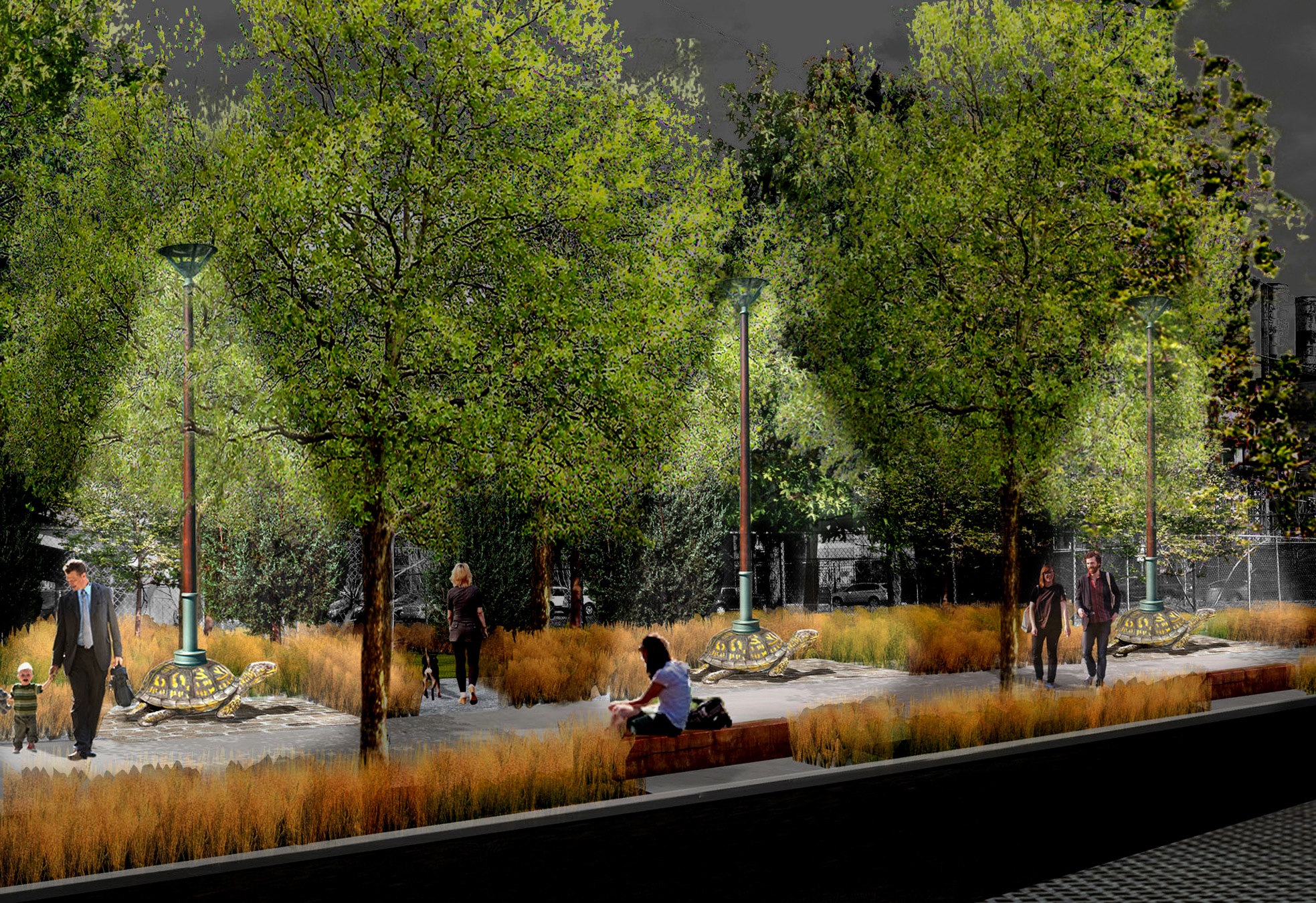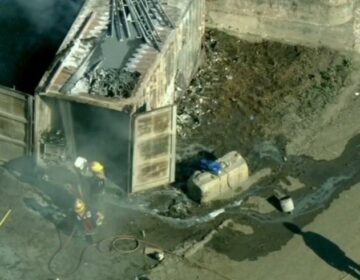Art Commission considers Manayunk, Delaware River projects

On Wednesday, the Philadelphia Art Commission enjoyed a morning of transitions — of bridges and crossings and dams. Three projects received final approval, while a fourth, the most complex was given the nod in-concept.
That project, overseen jointly by the Philadelphia Department of Parks and Recreation and the Philadelphia Water Department, calls for improvements to the Flat Rock Dam at the Manayunk Canal. Lance Butler, an environmental science for PWD provided an overview of the problems currently facing this area of the Schulykill River.
First, he said, the dam is in imminent danger of “sunny day failure,” meaning there doesn’t have to be a severe flood for it to collapse. Second, the canal’s water isn’t flowing and has become stagnant from disuse. Third, byproducts from algae are affecting the taste and odor of drinking water. And fourth, because it is aesthetically unpleasant, the canal isn’t presenting enough recreational uses.
Mark Focht, P&R’s first deputy commissioner for parks and facilities, commented that the canal is a “linear spine” that connects to the River’s trail system. Fixing the dam offers an opportunity to activate the canal so it is better suited for recreational uses.
The project comprises buttressing the existing wall that supports the sluice house, constructing new gates to manage waterflow to the canal, raising the towpath, and erecting an operations building to hold equipment and instrumentation for controlling the gates and the canal’s water levels. A fence to secure the new facility and to obscure it from the canal’s view shed will serve as the medium for the project’s as-yet-to-be-commissioned One Percent for Art contribution.
Commissioner Emmanuel Kelly praised the applicants for “making all the right decisions,” but suggested that the new building be topped by a roof line more in keeping with the horizontal nature of the site. Commissioner Jose Alminana suggested that a green roof be considered.
A second Manayunk Canal project — a One Percent for Art component of a new bridge connecting Lock St. to Venice Island — received final approval, with Alminana recusing himself because his firm, Andropogon, is the designer of the Island’s master plan.
The work, which received conceptual approval from the Commission more than four years ago, is a sculptural piece that serves as seating for a new children’s spray ground and is made of natural boulders, sourced from California, where the artist, Masayuki Nagase, lives.
The Delaware River also came into play as Commissioners reviewed an application for the second of a series of planned connectors linking it to the street grid, as prescribed in the Master Plan for the Central Delaware. Commissioner Rob Roesch recused himself from this discussion.
Artist Donald Lipski was on hand to walk Commissioners through his concept, which references Lenape origin myths and the animals associated with its three clans, the wolf, turkey, and turtle. The Columbia Avenue Connector connects the I-95 underpass to Penn Treaty Park, the site where William Penn signed a treaty with the Lenape. This installation is part of a PennDOT improvement that involves better lighting, access, and streetscaping, as well as the construction of another smaller park.
Lipski’s project takes the form of Cavawood light stanchions guiding the way to the river. Two lampposts will flank the entranceway to the underpass; one with a fiberglass wolf sculpture on top, one with a fiberglass turkey on top. At the other end of the underpass, a series of light poles will lead into the park; in this case each one will stand on the back of a cast bronze turtle.
Lipski said he will engage the talents of local sculptors Chris and John Collins to craft the animal forms, and that he will work with the local firm, The Lighting Practice, for the technical aspects.
Commissioner Almanina suggested that Lipski consider ways to marry the poles and the turtles so the demarcation between the manmade and the hand-crafted be softened, but Commission Chairman countered that it was important that the turtles still read as “bearing” something since that is a central part of their mythology.
Commissioner Karen Davis suggested that signage be included that explains the ideas behind the motifs.
The project received final go-ahead, even though it was its first appearance before the Commission.
The Commission also granted final approval to a replacement bridge at Willow Grove Avenue over the Chestnut Hill West rail line. That project first came before the Commission in December and this time around satisfactorily addressed the Commission’s concerns regarding some material choices.
WHYY is your source for fact-based, in-depth journalism and information. As a nonprofit organization, we rely on financial support from readers like you. Please give today.




